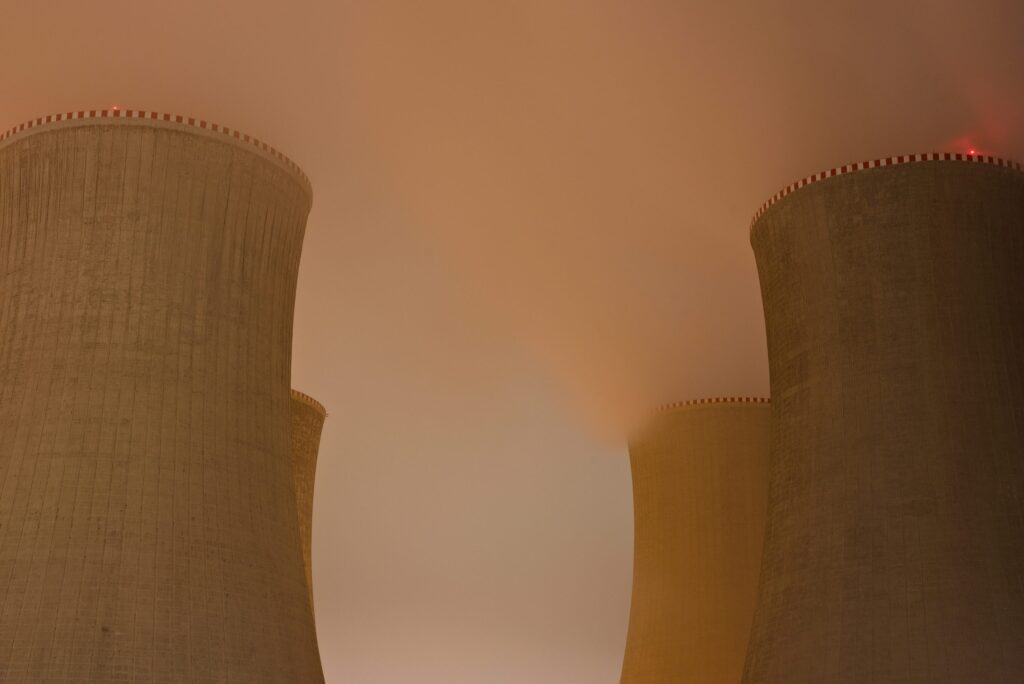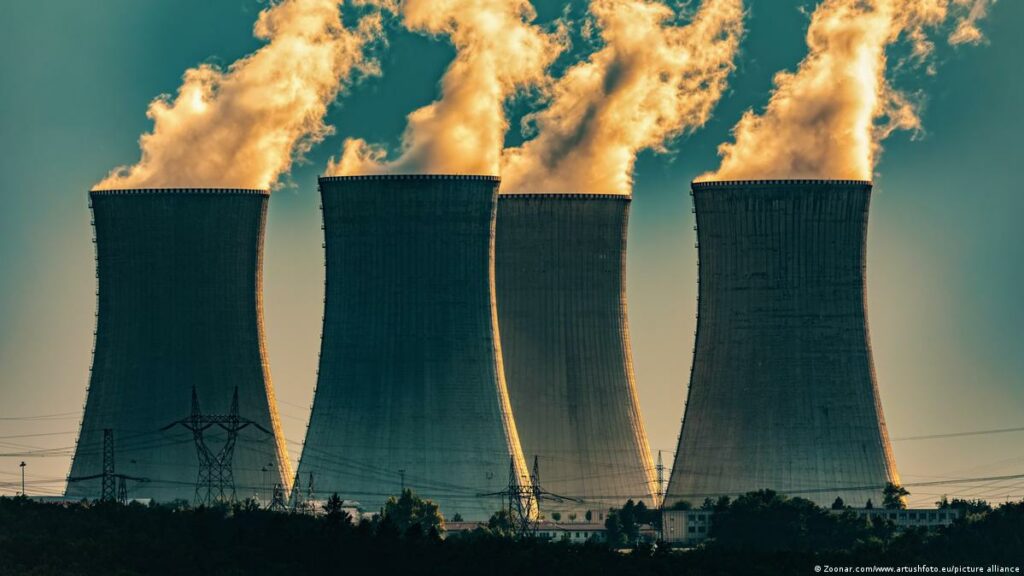A lot of people love to hate Bill Gates. But he (and Warren Buffet, to add to the potential for incoming hate) are building a nuclear reactor in Wyoming. A new, very cool, “sodium-cooled fast reactor with a molten salt-based energy storage system” called “Natrium”. It’s just a pilot project. But admit it: “sodium-cooled” sounds cool. And if you’re concerned about GHGs, and even if you’re not, it’s an outstanding example of positive, practical forward thinking instead of bitter, paranoid demands to change the laws of physics, economics and human nature by 3 p.m. For good measure, and irresistible symbolism, they’re going to put it in a decommissioned coal-fired plant. What’s not to love?
OK, Bill Gates isn’t very lovable, philanthropy in sweaters not withstanding. He’s a nerd who got incredibly rich instead of hanging around looking nerdy and frustrated, which could inspire envy if left untreated. And possibly he was not the ideal husband. But no, he’s not planning to sterilize or microchip the human race via vaccines or any of that nonsense, and we will swaddle you in tinfoil and banish you to Area 51 if you try to claim otherwise.
On the other hand, it is true that he’s been yammering on sanctimoniously about climate change from his 66,000-square-foot, $150-million seaside mansion with private library, 60-foot swimming pool with underwater music system, 2500-square-foot gym and thousand-square-foot dining room. Not that we’re jealous, but one of us grew up with a cottage that would have fit inside that dining room, and owns one that still would. And according to a writer in The Atlantic, “the median size of an American single-family home is in the neighborhood of 1,600 or 1,650 square feet.”
So 40 typical American houses would fit into the Gates mansion. It makes you wonder why he needs a gym. It would be a serious workout just going around looking at all the rooms you never go into. Including, one assumes, quite a few of the two dozen bathrooms.
Most of the details above come from the Wikipedia article on the Gates mansion, which includes the preposterous detail that the house “incorporates technology in its design” as if any house did not incorporate “technology”, starting with bricks and moving on through metallurgy to electricity. But that article fails to calculate the carbon footprint although it is safe to say that if your house has its own Wikipedia page, and that page says “Many online news articles call the house Xanadu 2.0”, that footprint makes a mockery of your concern for climate change.
It gets worse. The thing that really makes us look at Mr. Gates with horror is his flirtation with the notion of blocking sunlight. It is very hard to understand the arrogance of the mentality, even in a technological problem-solver as successful as he has been, that we know enough about climate to fine-tune it. Efforts to deflect sunlight are in the category that we fervently hope will simply fail and at huge cost. Because if they succeed, the knock-on effects are incalculable and especially if the climate really is as fragile as most alarmists belief, the whole venture is unbearably reckless.
Hang on. Didn’t you say you weren’t going to hate on Bill Gates? Indeed. And here we go with the love, or at least approval of one initiative. Nuclear reactors arouse negative emotions nearly as strong as those directed at Gates, often from people who think of them as a sort of Frankenstein’s monster with the brain of the Chernobyl reactor and the heart of an ICBM. But while it’s possible to build them badly, and the Soviets did, it’s also possible to build them well. And the newer types are far more efficient, far safer, far cleaner and in all ways superior. (Just as, we would say, Microsoft Word is a very different app today than back when it was a program in 1995. But to mention Microsoft software would invite a barrage of buns or worse so we won’t.)
These new sodium-cooled reactors are as cool as they sound. Not least because they promise smaller, modular construction that can bring reliable, affordable power not just to rich countries where the lights already stay on, unless they fall into the hands of unicorn-power utopians, but also to poor countries where the lack of such energy is a crushing burden, blighting and shortening lives tragically.
By the way, this splendid announcement was tarnished by the intrusion of a politician, Wyoming governor Mark Gordon, who apparently wants to have his oil and eat it too. “Earlier this year, I set a goal for Wyoming to be a carbon negative state and continue to use fossil fuels.” Evidently “carbon negative” means the state will capture more CO2 than it emits through some sort of magic power, while continuing to spew the stuff out: “I am not going to abandon any of our fossil fuel industry—it is absolutely essential to our state and one of the things that we believe very strongly is our fastest and clearest course to being carbon negative.”
This statement is a fairly standard mishmash of absurdity and contradiction. But we will only focus on one point. Fossil fuels are essential to Wyoming because it has a lot of them and the United States, like Canada and the world, still needs them to avoid a catastrophic collapse in living standards and indeed living at all. But if some new technology works nearly as well as it seems that, say, sodium-cooled nuclear plants will, fossil fuels will become fossils. And if they’re no longer competitive, there’s no reason to prop them up. Nostalgia is not a good basis for industrial strategy.
To be fair even to them, another politician said something more useful on this issue, possibly by mistake. U.S. Energy Secretary Jennifer Granholm chimed in that the project involves a “simpler design that will hopefully result in faster construction at lower cost.” What’s more, “It’s going to create a smaller footprint. It’s going to be equipped with next-generation safety measures.” Now possibly she only meant smaller than older nuclear plants. But compare this beauty, which fits inside an existing power station and can reliably power 250,000 homes and in a pinch 400,000 no matter what the weather is like and revs up and down when you want it to, with wind and solar that chew up immense quantities of natural space and in the case of wind its inhabitants as well, in order to deliver intermittent power at the wrong time.
Go nukes! Go Gates! Go Buffet! There. We said it.



The liquid sodium-cooled reactor sounds very reasonable, but Moltex has a better trick up it's corporate sleeve; the radioactive fuel is a molten uranium salt, which has the advantage of continuous 're-processing' of the fuel, so that instead of only using 2% of the fuel, uses more like 98%, but they also use molten (table) salt as a heat transfer medium, which is stored in an insulated tank, which is then used to heat water at peak times, multiplying the thermal capacity of the fuel, meaning a smaller core can generate more steam than would otherwise be the case.
Molten sodium is quite reactive, especially if it meets some water, so molten lead/bismuth/antimony might be a better choice, despite sodium being a large constituent of the body, and lead, etc, being generally poisonous to it.
Okay, CDN, dish on 'conspiracy theorists' while continually pointing out your theory (that the climate cartel is lying to gain control over energy policy).
Consistency, much?
btw - your theory appears correct to me, though they have greater ambitions.
So, maybe YOU could have an open mind to Gates having something more nefarious up his sleeve in pushing these vaccines on us than, well, why is he doing it? Or do you claim he isn't?
He's pushing these vaccines because he's heavily invested. More money = more power; more power = more money. OK, John pass the tinfoil...no, wait I found my big roll of alcan!
hmm...
" But if some new technology works nearly as well as it seems that, say, sodium-cooled nuclear plants will, fossil fuels will become fossils. And if they’re no longer competitive, there’s no reason to prop them up. Nostalgia is not a good basis for industrial strategy. " Ok, oil & gas - multi-trillion $ relics of the past; sure. I.e. we're sure you're onto something John
Is this it?
"compare this beauty, which fits inside an existing power station and can reliably power 250,000 homes and in a pinch 400,000 no matter what the weather is like and revs up and down when you want it to, with wind and solar that chew up immense quantities of natural space and in the case of wind its inhabitants as well, in order to deliver intermittent power at the wrong time. " Can't be wind nor solar, that's for sure.
But wait. What's this?
" Go nukes! Go Gates! Go Buffet! There. We said it. "
Sooo, oil & gas, wind & solar, and (no) new nukes.. are all out ???
Hard to know where you're going these days John.
Myself, for the most part, I'm sticking with oil & gas ..until better comes along, which I'll believe when it powers my needs.. for less. (won't hold my breath, either ; )
"But while it’s possible to build them badly, and the Soviets did, it’s also possible to build them well."
What purpose is served by demonising Soviets/Russia? As it happened, there have been less nuclear accidents in the USSR/Russia+Ukraine (9) than in either Canada (10), France (12), Japan (20), and the USA (53).